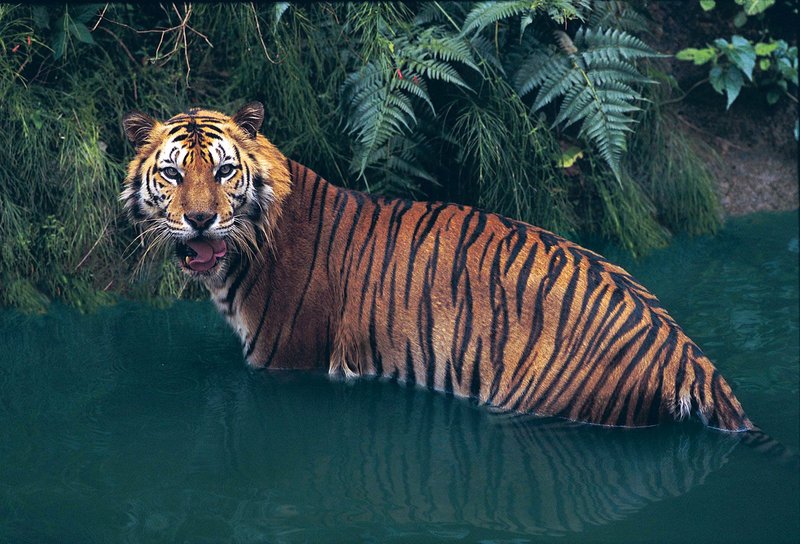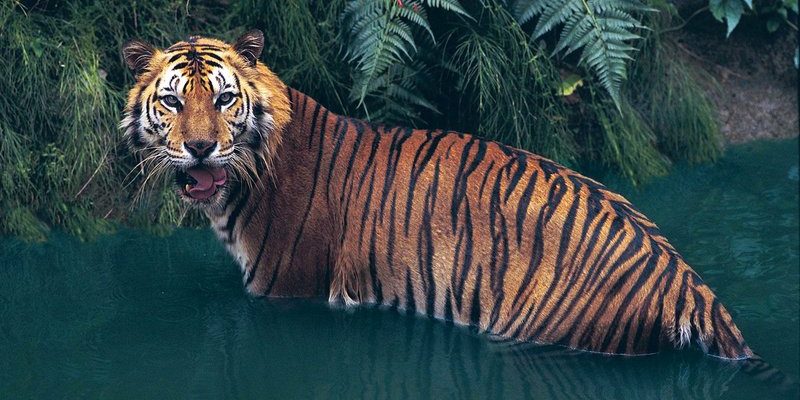
The Sumatran tiger, a unique subspecies of tiger found only on the Indonesian island of Sumatra, is critical for the maintenance of its ecosystem. Think of it as the keystone species within its territory. But what does that mean? Keystone species are those whose presence and activities significantly impact the structure of their environment. Without them, the ecosystem could change dramatically, leading to declines in other species and plant communities. Let’s explore how the Sumatran tiger fits into this intricate web of life.
What is a Keystone Species?
Before diving deeper into the role of the Sumatran tiger, let’s clarify what a keystone species is. Basically, think of it as a cornerstone in a building. If you remove one of those cornerstones, the whole structure can become unstable. In ecological terms, keystone species support a diverse range of organisms. They help maintain the balance of their environment, and their presence is crucial for the well-being of many other species.
The Sumatran tiger, like other big cats, helps control the populations of herbivores, which are animals that primarily eat plants. This regulation is essential for preventing overgrazing, which can lead to habitat destruction. For instance, if deer or wild boar populations go unchecked, they would consume vast amounts of vegetation. This could lead to soil erosion and a significant decrease in plant diversity, ultimately harming other species that rely on those plants for food and shelter.
Moreover, keystone species often influence the types of species that thrive in their environment. By keeping herbivore populations in check, tigers indirectly promote biodiversity. In this way, the Sumatran tiger is not only a predator but also a protector of its habitat.
The Role of the Sumatran Tiger in Prey Population Control
Now, let’s get into how the Sumatran tiger specifically manages prey populations. These tigers primarily hunt animals like deer, wild boar, and even smaller mammals. When they hunt effectively, they help maintain a balance in these populations, which is vital for the health of the forest ecosystem.
Think of it this way: if there were too many deer, they would overconsume the vegetation, leaving little for other animals. This scenario could lead to starvation among those creatures and even affect plant reproductive cycles. The tiger, being an apex predator, plays its part by stalking and hunting those deer, ensuring that their numbers remain manageable.
This hunting behavior also creates opportunities for scavengers. When a tiger makes a kill, other animals, including birds and smaller carnivores, benefit from the leftovers. Thus, the tiger sets off a chain reaction that supports other species, further enhancing biodiversity. In this way, the Sumatran tiger acts as both a hunter and a benefactor within its ecosystem.
Habitat Preservation Through Natural Feeding Behavior
Sumatran tigers are also significant in preserving their habitat indirectly through their natural feeding behaviors. When they hunt, they usually leave behind remnants of their kills, which break down and enrich the soil as they decompose. This natural cycle contributes to soil fertility, promoting healthy plant growth.
Additionally, the hunting trails created by tigers can help other animals navigate through the dense forest. These paths allow various species to access food and water sources that they might otherwise struggle to find. It’s like a natural highway system within the jungle that facilitates movement and interaction among different creatures.
As herbivores feed on vegetation, they might contribute to soil aeration and seed dispersal, indirectly promoting a rich and diverse plant community. Therefore, the feeding habits of the Sumatran tiger create a ripple effect, benefiting its entire ecosystem.
The Impact of Human Activity on the Sumatran Tiger
Unfortunately, the Sumatran tiger’s vital role is under threat due to human activities. Deforestation, primarily for agriculture and palm oil production, is one of the biggest challenges facing these tigers. As their forest homes are destroyed, their prey becomes scarce, leading to a decline in tiger populations.
This loss isn’t just bad news for tigers. Their disappearance can upset the delicate balance they maintain within the ecosystem. Without them, herbivore populations may surge, leading to overgrazing and habitat destruction. In a way, the Sumatran tiger is like a guardian of the forest, and without this guardian, the entire community of plants and animals could face significant disruptions.
Moreover, illegal poaching poses another severe risk. Tigers are often hunted for their fur and bones. This not only reduces their numbers but also undermines the entire ecological framework they support. So, the next time you hear about endangered species, remember the Sumatran tiger and its crucial place in the ecosystem.
Conservation Efforts for the Sumatran Tiger
Given the many threats to their existence, various conservation efforts are in place to protect the Sumatran tiger and its habitat. Organizations are working tirelessly to establish protected areas where these magnificent cats can roam freely. Conservationists are also advocating for sustainable agricultural practices to mitigate deforestation and promote coexistence between humans and wildlife.
Community education plays a key role in these efforts, too. By informing local populations about the importance of tigers in maintaining ecological balance, conservationists hope to foster a sense of pride in their natural heritage. Sometimes, when people understand the value of their natural surroundings, they become advocates for their preservation.
Additionally, anti-poaching initiatives are crucial in this fight. By increasing surveillance in critical areas and imposing stricter penalties for poaching, conservationists aim to protect the remaining Sumatran tiger population. Every effort counts, and public support can make a difference in their survival.
Why the Sumatran Tiger Matters To All of Us
You might be wondering why the plight of the Sumatran tiger matters to people who live far from Sumatra. Here’s the thing: the health of ecosystems is interconnected. When species like the Sumatran tiger thrive, they support biodiversity that benefits the planet as a whole. Healthy ecosystems contribute to clean air, water, and even climate stability.
Moreover, many communities depend on the natural resources found in these ecosystems. If the tiger disappears, the repercussions will ripple out, affecting not just wildlife but human populations as well. Protecting the Sumatran tiger isn’t just about saving one species; it’s about ensuring a balanced, thriving environment for generations to come.
In essence, the Sumatran tiger symbolizes the beauty and fragility of nature. By understanding its role in the ecosystem, we can appreciate more deeply the interconnectedness of life and the need for responsible stewardship of our planet.
In conclusion, the Sumatran tiger is not just a beautiful creature; it is a linchpin in its ecosystem. By keeping prey populations in check and maintaining the health of its habitat, this keystone species plays a critical role in biodiversity. Protecting Sumatran tigers means protecting the intricate web of life that surrounds them. So, let’s all do our part in ensuring their survival and, in turn, the health of our planet.

